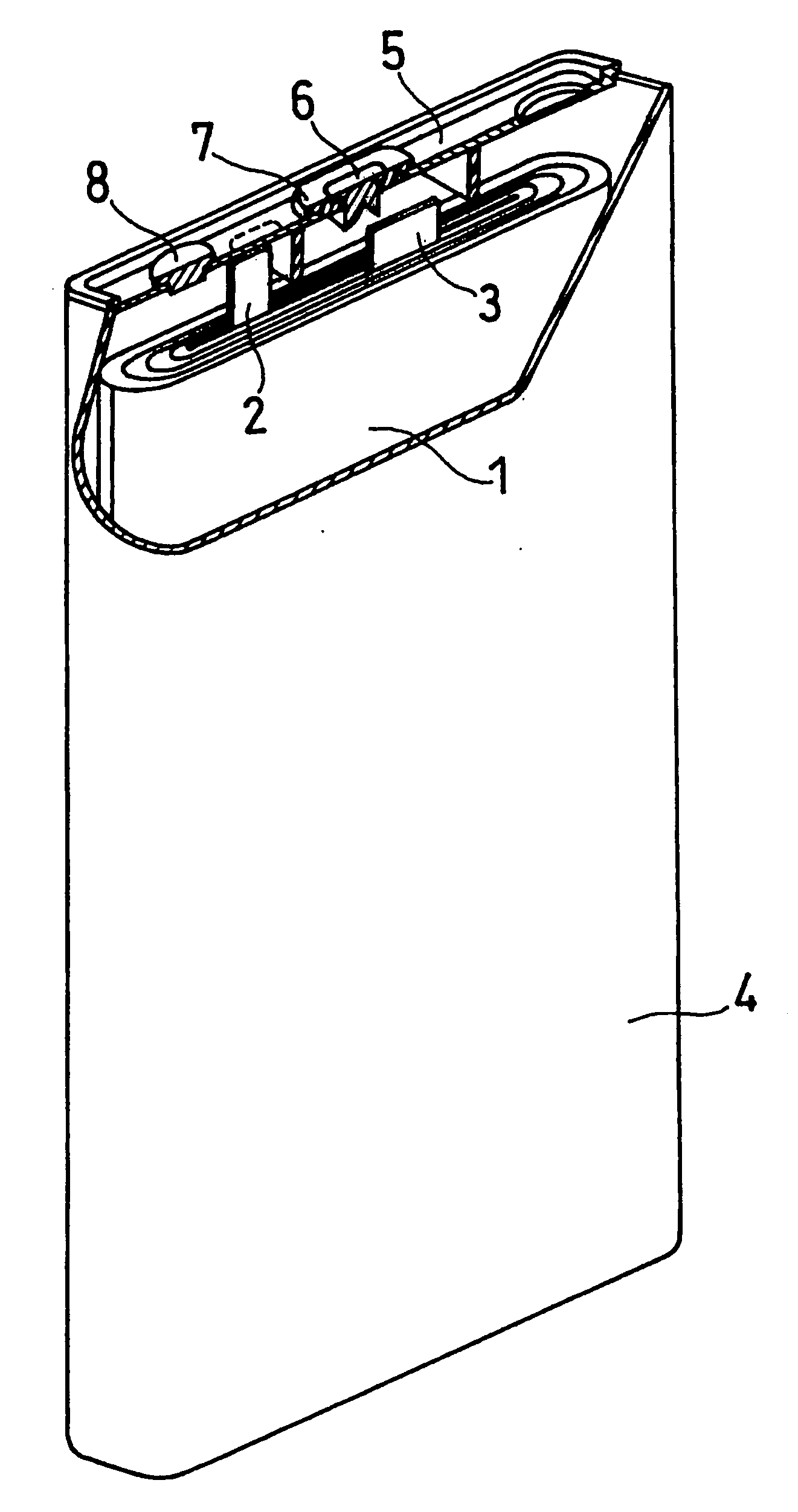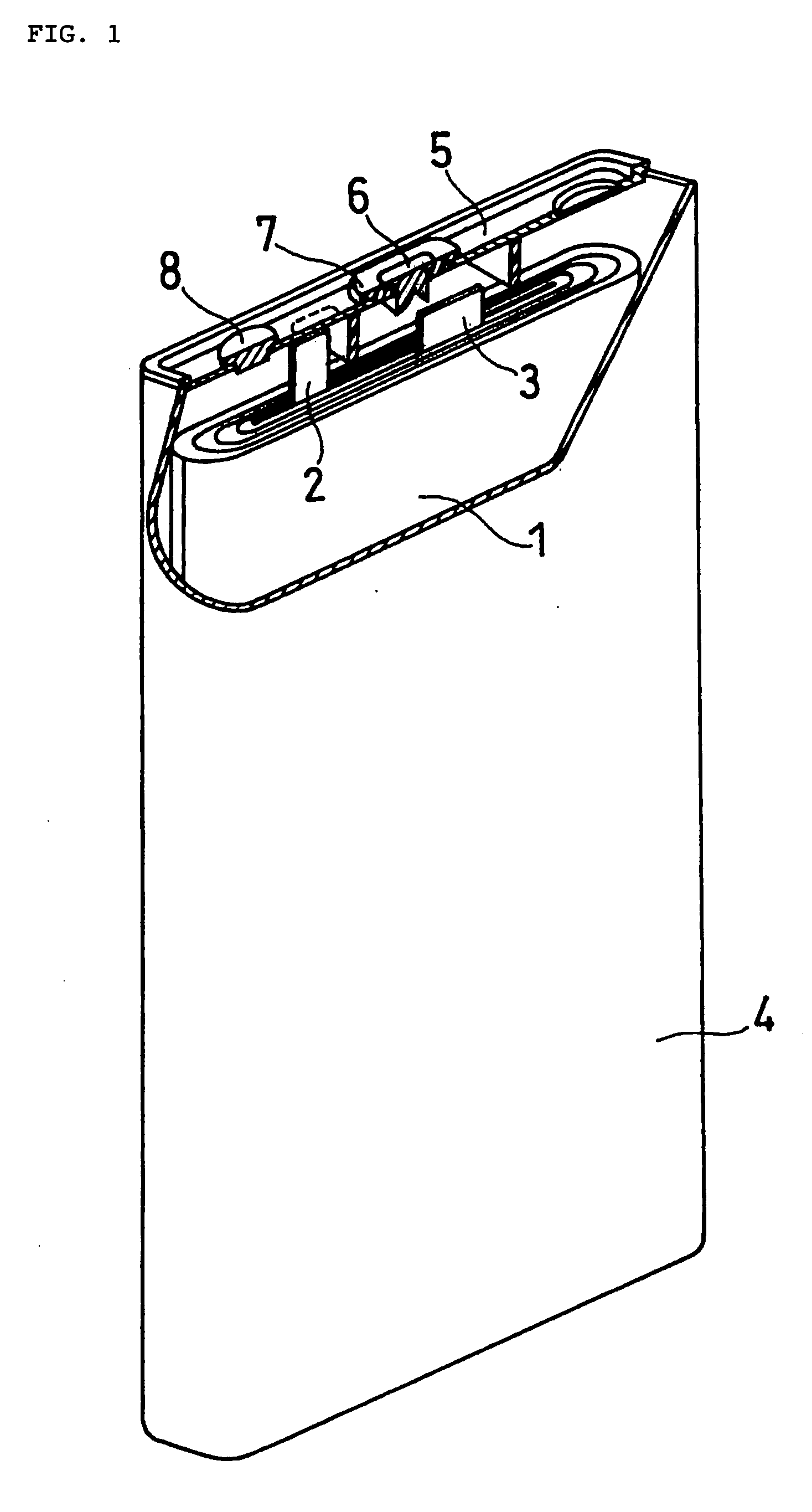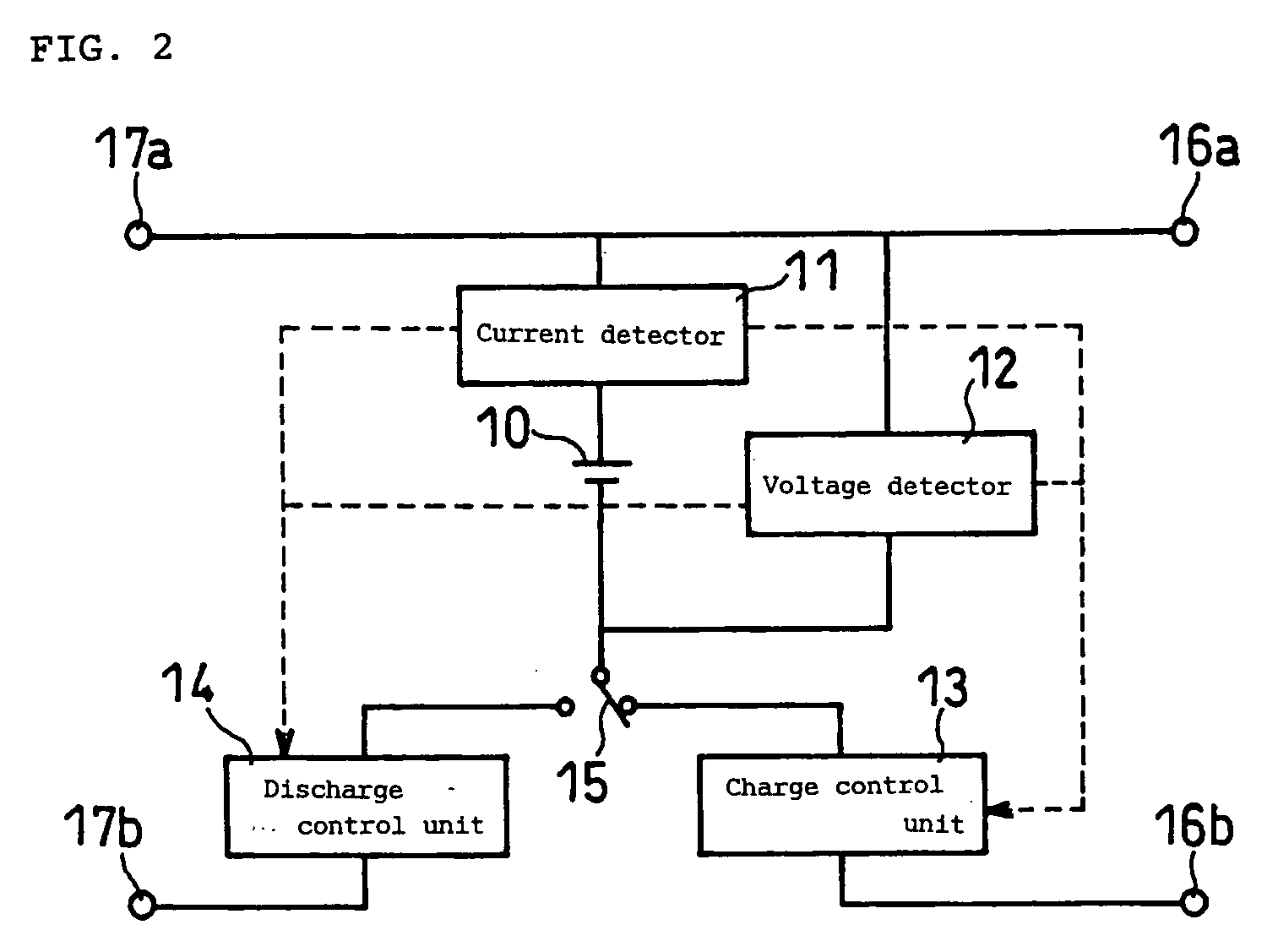Non-Aqueous Electrolyte Secondary Battery
- Summary
- Abstract
- Description
- Claims
- Application Information
AI Technical Summary
Benefits of technology
Problems solved by technology
Method used
Image
Examples
example 1
Battery Production
[0071]FIG. 1 illustrates a prismatic non-aqueous electrolyte secondary battery used in this example, with a thickness of 5.2 mm, a width of 34 mm, and a height of 50 mm. An electrode plate group 1 is prepared by spirally winding a belt-like positive electrode plate, a belt-like negative electrode plate, and a separator interposed between them. The positive electrode plate and the negative electrode plate are welded with an aluminum positive electrode lead 2 and a nickel negative electrode lead 3, respectively. The electrode plate group 1, with an insulating ring made of polyethylene resin fitted to the upper part thereof, is housed in an aluminum battery case 4. The end of the positive electrode lead 2 is spot welded to an aluminum sealing plate 5. Also, the end of the negative electrode lead 3 is spot welded to the lower part of a nickel negative electrode terminal 6, which is attached to the central part of the sealing plate 5 with an insulating gasket 7 interpos...
example 2
[0097]Batteries 10 to 18 were produced in the same manner as in Example 1, except for the use of LiNi0.4Mn0.4Co0.2O2 as the positive electrode active material, and evaluated in the same manner as in Example 1. Table 3 shows the positive / negative active material weight ratios R.
[0098]Table 4 shows the capacity retention rates after 500 cycles and the heat runaway limit temperatures obtained in the heating test for each of the set cut-off voltages of charge.
TABLE 3Active materialweight (mg / cm2)Positive electrodeWeightPositiveNegativeactive materialratio RelectrodeelectrodeBattery 10LiNi0.4Mn0.4Co0.2O21.2018.815.7Battery 11LiNi0.4Mn0.4Co0.2O21.3019.314.8Battery 12LiNi0.4Mn0.4Co0.2O21.4019.814.1Battery 13LiNi0.4Mn0.4Co0.2O21.5020.313.5Battery 14LiNi0.4Mn0.4Co0.2O21.7021.312.5Battery 15LiNi0.4Mn0.4Co0.2O22.0022.811.4Battery 16LiNi0.4Mn0.4Co0.2O22.2023.710.8Battery 17LiNi0.4Mn0.4Co0.2O22.3024.310.6Battery 18LiNi0.4Mn0.4Co0.2O22.4024.810.3Comparison ALiCoO22.0022.811.4
TABLE 4Heat runaway l...
example 3
[0101]Batteries 19 to 27 having the positive / negative active material weight ratios R as shown in Table 5 were produced in the same manner as in Example 1, except for the use of a mixture of LiCo0.94Mg0.05Al0.01O2 and LiNi0.4Mn0.4Co0.2O2 in a weight ratio of 70:30 as the positive electrode active material. They were evaluated in the same manner as in Example 1.
[0102]Table 6 shows the capacity retention rates after 500 cycles and the heat runaway limit temperatures obtained in the heating test for each of the set cut-off voltages of charge.
TABLE 5Active materialweightPositive electrode active(mg / cm2)materialWeightPositiveNegative(Weight ratio)ratio RelectrodeelectrodeBatteryLiCo0.94Mg0.05Al0.01O2 / 1.2018.815.719LiNi0.4Mn0.4Co0.2O2(70 / 30)BatteryLiCo0.94Mg0.05Al0.01O2 / 1.3019.314.820LiNi0.4Mn0.4Co0.2O2(70 / 30)BatteryLiCo0.94Mg0.05Al0.01O2 / 1.4019.814.121LiNi0.4Mn0.4Co0.2O2(70 / 30)BatteryLiCo0.94Mg0.05Al0.01O2 / 1.5020.313.522LiNi0.4Mn0.4Co0.2O2(70 / 30)BatteryLiCo0.94Mg0.05Al0.01O2 / 1.7021.312.5...
PUM
 Login to View More
Login to View More Abstract
Description
Claims
Application Information
 Login to View More
Login to View More - R&D
- Intellectual Property
- Life Sciences
- Materials
- Tech Scout
- Unparalleled Data Quality
- Higher Quality Content
- 60% Fewer Hallucinations
Browse by: Latest US Patents, China's latest patents, Technical Efficacy Thesaurus, Application Domain, Technology Topic, Popular Technical Reports.
© 2025 PatSnap. All rights reserved.Legal|Privacy policy|Modern Slavery Act Transparency Statement|Sitemap|About US| Contact US: help@patsnap.com



